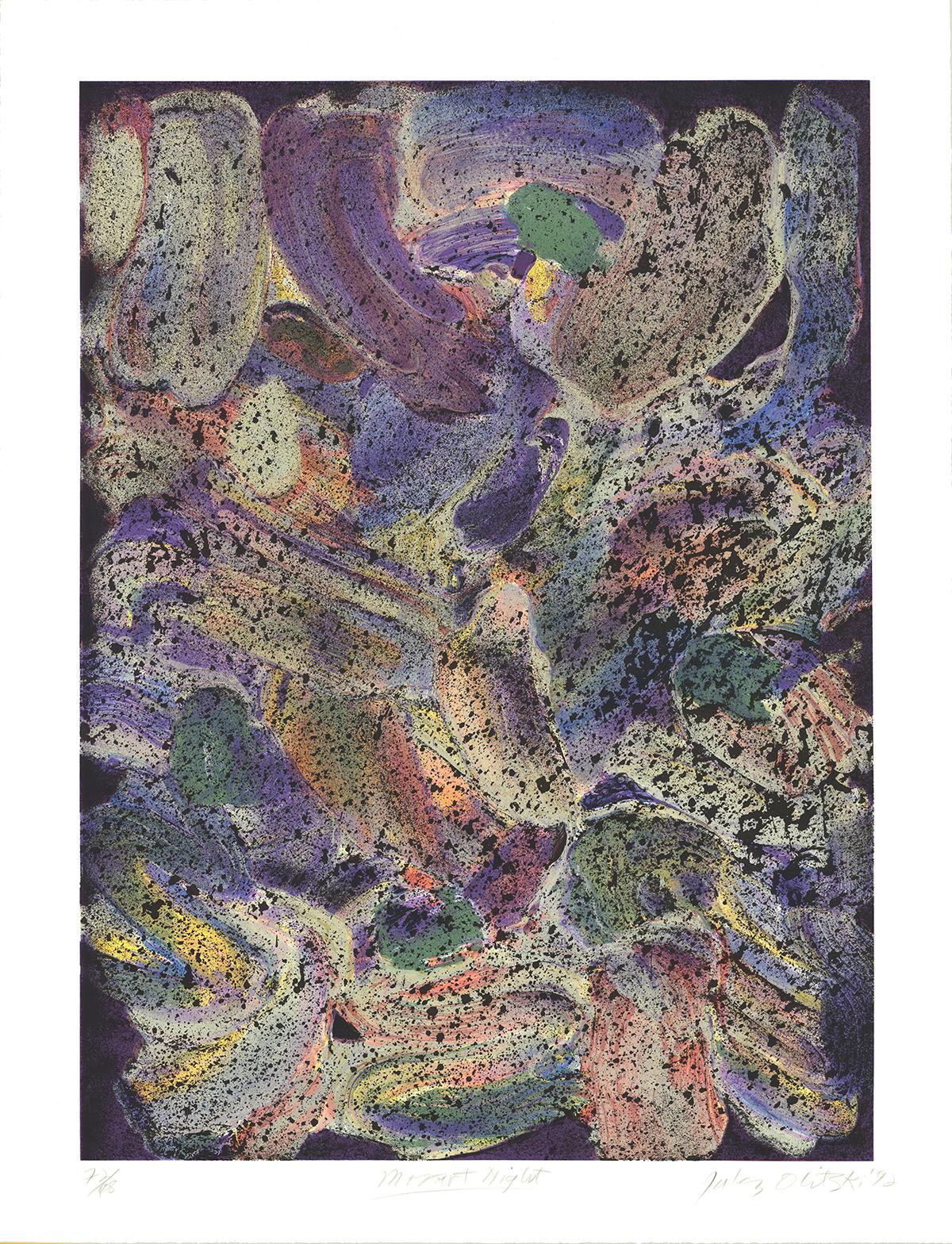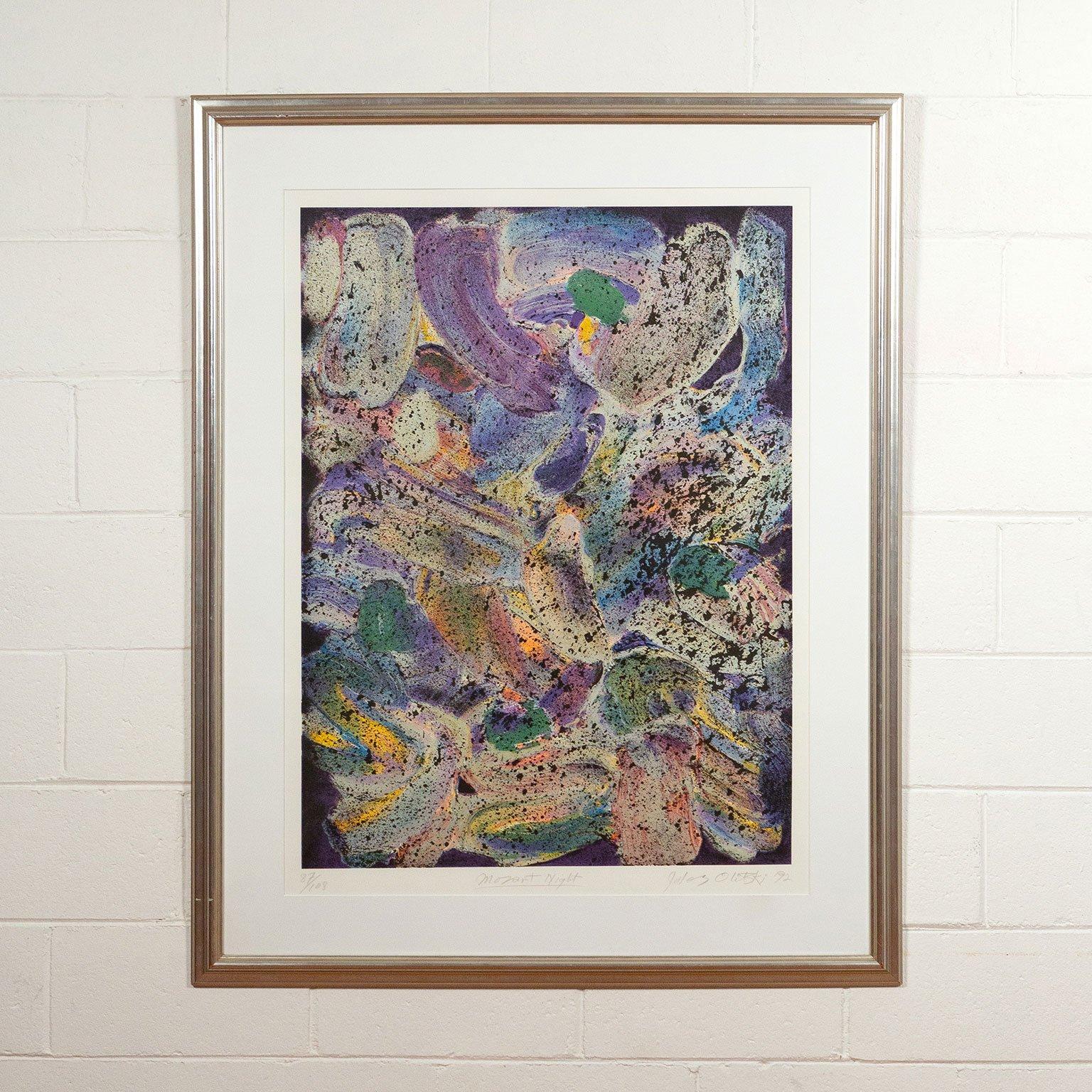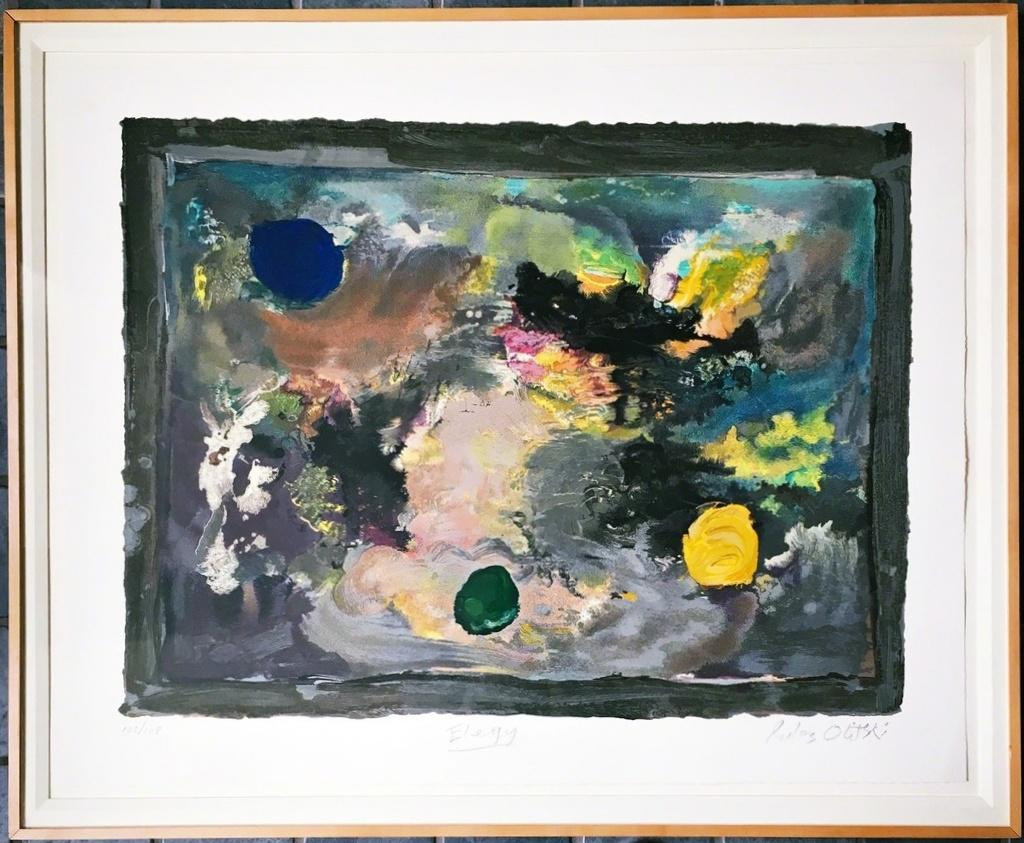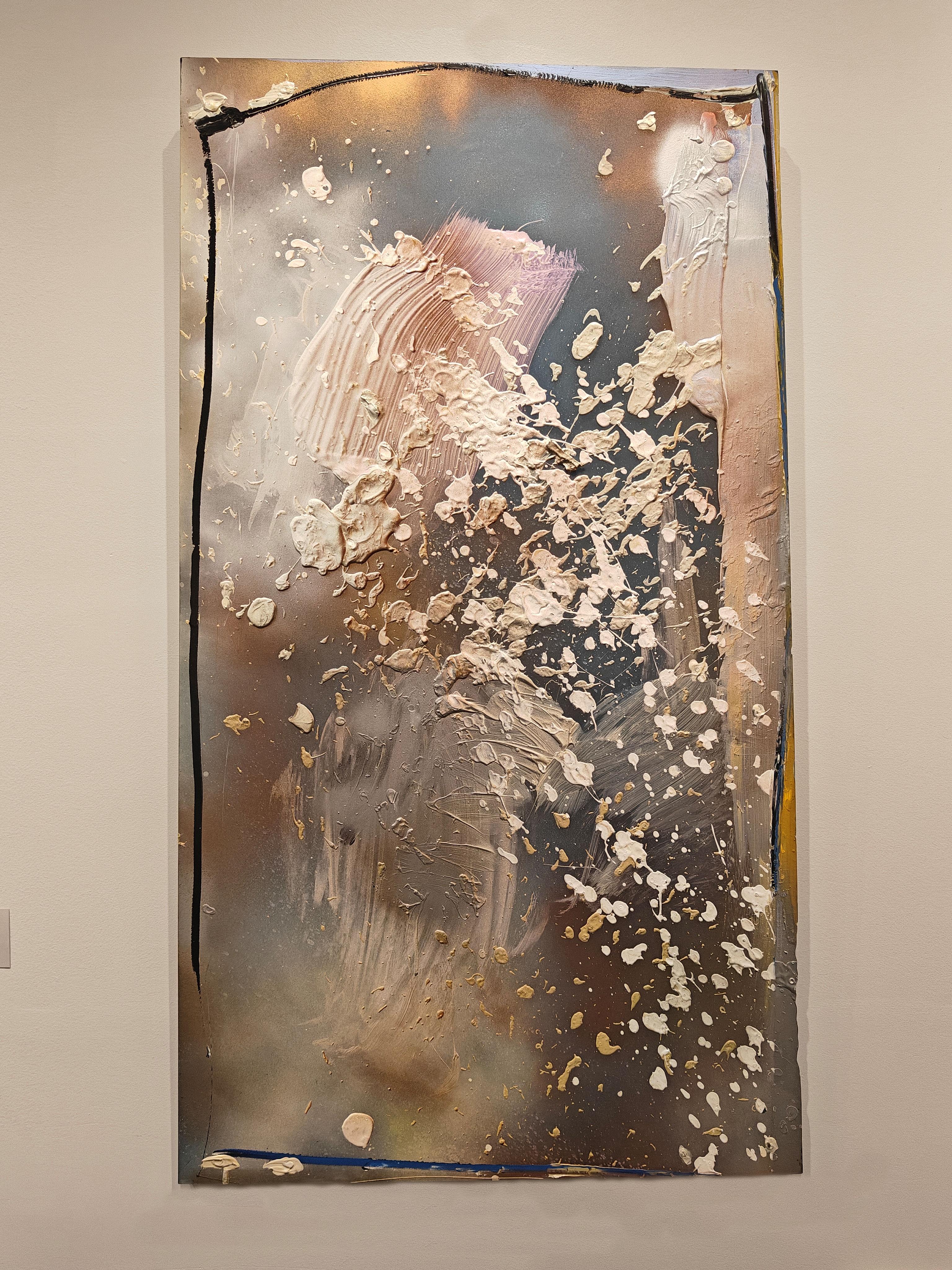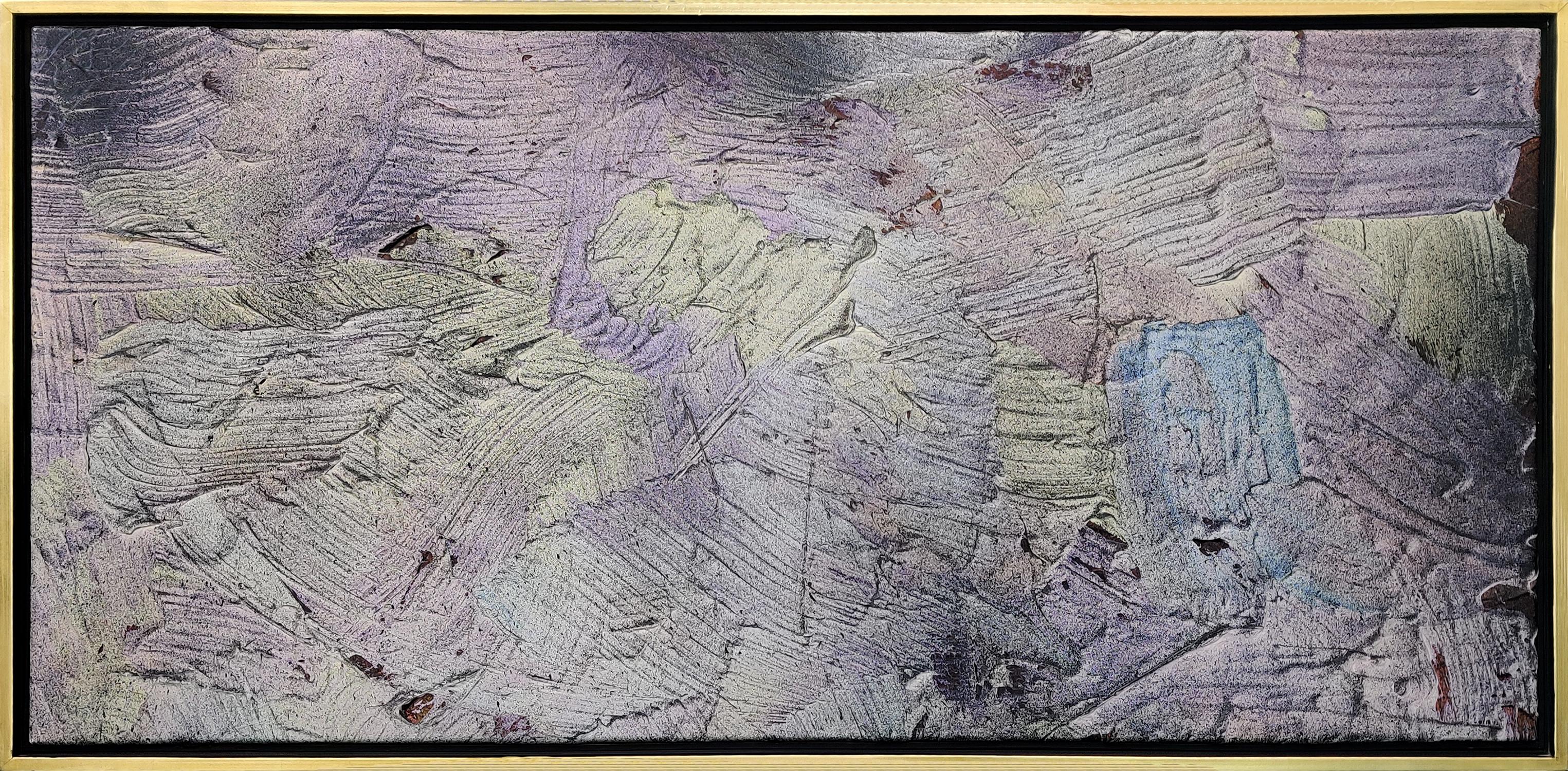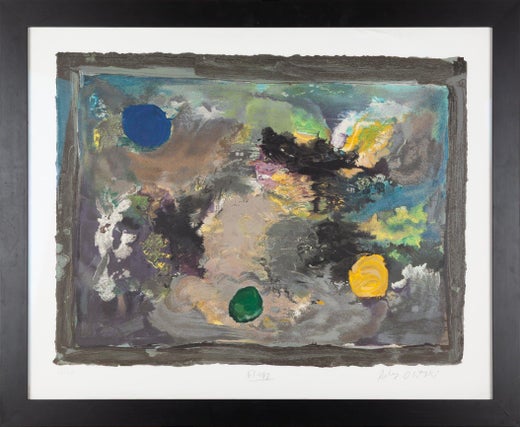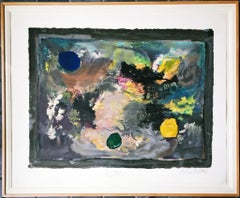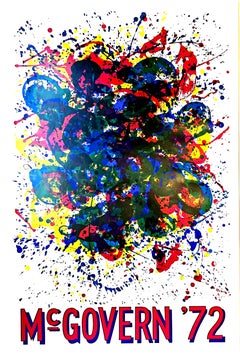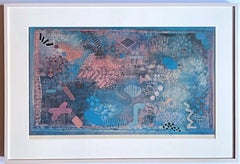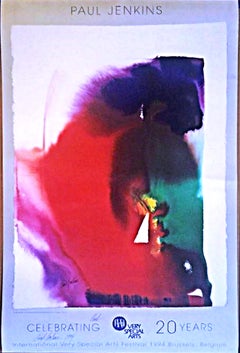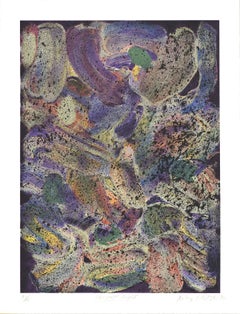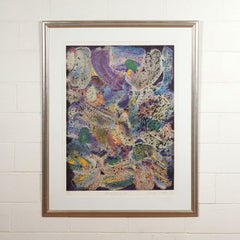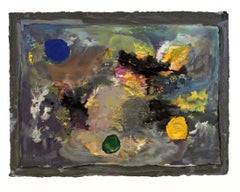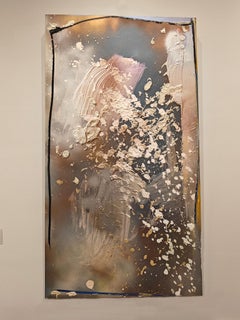Items Similar to Jules Olitski, Mozart Night, color field silkscreen for Lincoln Center, Signed/N
Want more images or videos?
Request additional images or videos from the seller
1 of 7
Jules OlitskiJules Olitski, Mozart Night, color field silkscreen for Lincoln Center, Signed/N1992
1992
$2,400
£1,827.60
€2,087
CA$3,372.30
A$3,700.05
CHF 1,949.01
MX$44,016.02
NOK 24,966.58
SEK 22,797.89
DKK 15,591.90
About the Item
Jules Olitski
Mozart Night, 1992
Silkscreen on wove paper
Signed, dated, titled and numbered 71/108 in graphite pencil on the front
Edition 71/108
47 × 36 inches
Unframed
Silkscreen on wove paper
pencil signed, titled, dated and numbered 71/108 on the front
Published by the Lincoln Center Vera List print program, New York
In the late 1980's Olitski embarked on a new chapter of art-making. Similar to previous eras, embracing an unconventional tool led to a distinct and new aesthetic. In the late 1960's using a spray gun led to his spray paintings...similarly at the end of the 80's Olitski took up the painter's mitt - typically used by household painters for affects using plaster on walls.
His work from the late 1980's and early 1990's is characterized by swirling interlocking forms created with a heavy impasto and thick brushwork in shimmering shades of purples, creams and orange highlights.
This large and impressive silkscreen is a great example from Olitski's "Mitt Paintings" period.
Jules Olitski Biography
Born Jevel Demikovsky in 1922 in Snovsk, Soviet Russia, Jules Olitski emigrated to the United States, settling in Brooklyn, New York, in 1926. Amidst a tumultuous childhood, Olitski developed an interest in art, and on graduating from high school was awarded a scholarship to the Pratt Institute. Olitski’s formal training continued in 1940 when he enrolled at the National Academy of Design in New York, but because of the ongoing war, he was drafted into the US Army in 1942 and served until 1945. Like many fellow veterans, Olitski benefited from the G.I. Bill, and after his discharge he visited Paris, France, to study first with sculptor Ossip Zadkine, then at the Académie de la Grande Chaumière.
During his time in Paris, Olitski began to question his extensive formal training via avant-garde experiments that he devised for that purpose. In the first of these, he practiced drawing while blindfolded, hoping to bring the purely intuitive to the forefront of his work. Also, while in Paris, Olitski met fellow American artist Sidney Geist, and, along with Al Held and Lawrence Calcagno, they opened Galerie Huit on the Left Bank. Olitski had his first solo show there in 1951. On returning to New York, Olitski attended New York University, where he completed his BA and MA in art education in 1952 and 1954 respectively. After graduation, he accepted a teaching position at the University of New York, New Paltz, the first of many he would hold. In tandem with his teaching, Olitski continued his artistic experiments in distinct series that addressed both shape and color, eventually bringing to his work a uniquely atmospheric quality. His work has been featured in major exhibitions including the XXXIII InternationalBiennial Exhibition of Art, United States Pavilion, Venice; the 1973 Whitney Biennial Exhibition; and two traveling shows Olitski, organized by Museum of Fine Arts, Boston, in 1973 and Revelations: Major Paintings by Jules Olitski organized by the Kemper Museum of Contemporary Art, Kansas City, in 2011.
He was awarded numerous prizes—including one for his work included in the 1961 Pittsburgh International Exhibition of Contemporary Painting and Sculpture at the Carnegie Institute—and honors during his career and right up until his death in 2007. Today Olitski’s work can be found in many prestigious collections worldwide, including the Metropolitan Museum of Art, New York; the San Francisco Museum of Modern Art; the Tate Gallery, London; the Uffizi Gallery, Florence; and the National Gallery of Canada, Ottawa.
-Courtesy Yares
- Creator:Jules Olitski (1922-2007, American)
- Creation Year:1992
- Dimensions:Height: 47 in (119.38 cm)Width: 36 in (91.44 cm)
- Medium:
- Movement & Style:
- Period:
- Condition:Excellent condition; unframed.
- Gallery Location:New York, NY
- Reference Number:1stDibs: LU1745214831062
Jules Olitski
Jules Olitski was an abstract Color Field painting in the mid-1960s, Olitski focused on the material qualities of surface and color in painting, rather than the personal expression of the artist. He pioneered a technique using an industrial spray gun to lightly apply paint on unprimed canvas, creating an effect of hazy color suspended midair. Even after returning to the brush, Olitski maintained this airy interaction of color and light. Olitski represented the United States in the 1966 Venice Biennale, and was given the first solo exhibition for a living American artist at the Metropolitan Museum of Art in 1969.
About the Seller
5.0
Gold Seller
Premium sellers maintaining a 4.3+ rating and 24-hour response times
Established in 2007
1stDibs seller since 2022
473 sales on 1stDibs
Typical response time: 1 hour
- ShippingRetrieving quote...Shipping from: New York, NY
- Return Policy
More From This Seller
View AllElegy, September 11, 2001, screenprint, signed/N, Framed abstract expressionist
By Jules Olitski
Located in New York, NY
Jules Olitski
Elegy, September 11, 2001, 2002
Silkscreen on wove paper
Edition 103/108
Signed, titled and numbered in graphite pencil 103/108 on the front
Framed
Jules Olitski is hon...
Category
1980s Abstract Expressionist Abstract Prints
Materials
Screen
Sam Francis McGovern '72 Poster (Hand signed by Sam Francis) Abstract lithograph
By Sam Francis
Located in New York, NY
Sam Francis McGovern '72 Poster (Hand signed by Sam Francis), 1972
Photo offset poster (hand signed by Sam Francis)
Signed in blue ink on the front by Sam Francis with Sam Francis co...
Category
1970s Abstract Expressionist Abstract Prints
Materials
Offset, Lithograph
Abstract Expressionist monotype (unique), signed and inscribed with heart Framed
By Robert Natkin
Located in New York, NY
Robert Natkin
monotype (unique) on paper
signed in marker on the front
Pencil signed, and inscribed with heart doodle:
"For Dorothy and Arthur with my Love Natkin"
Provenance: collec...
Category
1970s Abstract Abstract Prints
Materials
Monotype
International Very Special Arts signed, inscribed Abstract Expressionist poster
By Paul Jenkins
Located in New York, NY
Paul Jenkins
International Very Special Arts Festival poster, 1994
hand signed and dated by Paul Jenkins
Measures: 37 inches (vertical) x 25 inches (horizontal)
Ships rolled in a tub...
Category
1990s Abstract Expressionist Abstract Prints
Materials
Offset, Ballpoint Pen, Lithograph
Sam Gilliam, Cuatro, Monoprint with collage acrylic stitching & embossing Signed
By Sam Gilliam
Located in New York, NY
Sam Gilliam
Cuatro, 1994
Monoprint with screenprint, collage, acrylic, stitching and embossing in colors on handmade paper
Hand signed, dated, titled and annotated P/P by Sam Gilliam...
Category
1990s Abstract Expressionist Abstract Prints
Materials
Mixed Media, Acrylic, Monoprint, Screen
Sam Gilliam, Monoprint with collage acrylic, stitching & embossing Signed Framed
By Sam Gilliam
Located in New York, NY
Monoprint with screenprint, collage, acrylic, stitching and embossing in colors on handmade paper, 1994, signed, dated, titled, and numbered 10/40 (each unique) in black and silver i...
Category
1990s Abstract Expressionist Abstract Prints
Materials
Thread, Mixed Media, Acrylic, Rag Paper, Screen
You May Also Like
Jules Olitski-Mozart Night-HAND SIGNED
By Jules Olitski
Located in Brooklyn, NY
"Mozart Night" by Jules Olitski is a captivating work that epitomizes the artist's innovative approach to color and abstraction. Hand signed, dated, titled, and numbered out of an ed...
Category
20th Century Contemporary Prints and Multiples
Materials
Screen
$4,400 Sale Price
20% Off
Mozart Night
By Jules Olitski
Located in Toronto, Ontario
Jules Olitski (1922-2007) is one of Caviar20's favorite abstract artists of the 20th century. Over the course of his career his aesthetic evolved in startling and fascinating ways. ...
Category
1990s Abstract Impressionist Prints and Multiples
Materials
Screen
$2,750 Sale Price
42% Off
"Elegy" by Jules Olitski (Abstract, Blue, Yellow, Screen print)
By Jules Olitski
Located in New York, NY
This 30 color screen print was created at Brand X Editions to commemorate the terrorist attacks of September 11, 2001 in New York City. This print comes directly from the publisher, Lincoln Center Editions...
Category
Early 2000s Color-Field Abstract Prints
Materials
Screen
"Abare" Jules Olitski, Color-Field, Abstract Expressionist, Gestural Painting
By Jules Olitski
Located in New York, NY
Jules Olitski
Abare, 1987
Signed and dated on the reverse
Oil-based acrylic and water-based acrylic on plexiglass
44 3/4 x 23 5/8 inches
Provenance
The artist
Andre Emmerich Gallery...
Category
1980s Abstract Expressionist Abstract Paintings
Materials
Plexiglass, Oil, Acrylic
TRADITION MEMORY
By Jules Olitski
Located in Aventura, FL
Original water based acrylic on canvas. Hand signed and dated on verso by the artist. Can be hung vertically or horizontally.
Artwork is in excellent condition. Certificate of authe...
Category
Late 20th Century Abstract Expressionist Abstract Paintings
Materials
Canvas, Acrylic
$52,500 Sale Price
25% Off
SLAIN COMMISSAR
By Jules Olitski
Located in Aventura, FL
Original water based acrylic on canvas. Hand signed and dated on verso by the artist. Artwork is in excellent condition. Certificate of authenticity included. All reasonable offers w...
Category
Late 20th Century Abstract Expressionist Abstract Paintings
Materials
Canvas, Acrylic
$60,000 Sale Price
25% Off
More Ways To Browse
Georges Chakra
Gerhard Richter Signed
Gudmund Olsen
Had Gadya
Howardena Pindell
Ida Shoichi
Jamie Hewlett
Jan Sawka
Jasper Johns Whitney
Jaune Quick To See Smith
Joan Miro Quelque Fleur Pour Des Amis
Joan Miro Revolutions Sceniques Du Xxe Siecle I
Jorg Schmeisser
Josef Albers Yellow
Kandinsky And Etching
Kaws Snoopy
Krakow Vintage Poster
Lennart Nystrom
